Subjects we offer
Our content is sorted either by Achievement Objectives - to cover the curricula requirements, or by Topic to allow any student to benefit no matter what course they are following, e.g. Cambridge, General Certificate of Secondary Education (GCSE), and International Baccalaureate (IB).
Currently we have content for the following subjects: English, Maths, Science and Physics. Click on a year level to view a summary of the content we offer.
English
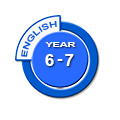
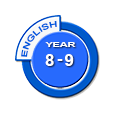
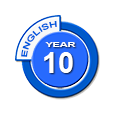
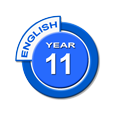
Years 6 - 7
100+ modules grouped under topics with approximately 140 pages of information, 2000+ questions
and explanations pitched at Stages 3 and 4 of the Australia Curriculum.
Topic Contents (Stages 3 and 4)
-
Close Reading of an Unfamiliar Text
33 modules (Stages 3 and 4) that provide students with opportunity to read closely, to show their understanding of ideas and meanings, word classes and language features in a range of authentic texts. -
Language Features and Poetic Devices
6 modules that explain and provide focused practice for students in recognising poetic devices used commonly in poetry. -
Punctuation
5 modules provide information and practice in accurate punctuation. -
Sentence Structure
3 modules that teach students the main type of sentences -
Spelling
8 modules focus on common 'rules' of spelling. Lists of useful vocabulary and subject specific terms will be added over time. -
Vocabulary Development
80+ modules covering confusing words/homophones, prefixes and suffixes. There also some that ask students to think about expanding their vocabulary in order to make their writing more vivid. -
Word Classes
16 modules provide information and practice in recognising the different parts of speech.
Years 8 - 9
Workbooks
This subject is supported by two write-on workbooks with notes and exercises:-
Arranging Words
60 pages covering punctuation, word classes and sentence structure. -
Working with Words
88 pages covering background to writing, the history of the English language, poetic devices and language features, close reading.
eLearning
200+ modules with approximately 250 pages of information, 2000+ questions and explanations pitched at Stages 4 and 5. This subject is supported by the two write-on workbooks with notes and exercises:Topic Contents (Stages 4 - 5)
-
Background to Writing and Formal Writing
9 modules covering a range of aspects of writing including recognising formal and informal writing, fact and opinion, the literary essay and letters to the editor. -
Close Reading of an Unfamiliar Text
58+ modules (Stages 3 - 5) that provide students with opportunity to read closely in order to show their understanding of ideas and meanings, word classes and language features in a range of authentic texts. -
Derivations - The History of the English Language
19 modules assist students to explore aspects of the development of the English language over a thousand years. Students will enjoy learning about earlier forms of the language and discover where words have come from. A dictionary with derivations will be helpful but not essential. -
Exemplars
6 exemplars of student writing. -
Language Features and Poetic Devices
15 modules that explain and provide focused practice for students in recognising and commenting on the effect of common language features and poetic devices. -
Punctuation
5 modules provide information and practice in accurate punctuation. -
Response to Text
3 modules that relate to creative texts. -
Sentence Structure
5 modules relating to aspects of different sentence types. -
Spelling
8 modules focus on common 'rules' of spelling. Lists of useful vocabulary and subject specific terms will be added over time. -
Vocabulary Development
26+ modules cover confusing words/homophones, prefixes and suffixes, and include some that ask students to think about expanding their vocabulary in order to make their writing more vivid. 35 additional modules in the Revision folder. -
Word Classes
21 modules provide information and practice in recognising the different parts of speech.
Year 10
Workbook
The eLearning program is supported by a write-on workbook:-
Year 10: Close Reading of Unfamiliar Text
40 pages and 16 passages of non fiction, fiction and poetry extracts with graded questions.
eLearning
130+ modules with approximately 260 pages of information, 3600+ questions and explanations.-
Basic Revision Skills
18 modules revising knowledge and use of word classes and punctuation. -
Definitions
8 modules testing meanings of key terms in Year 10 English.
View by Achievement Objectives Contents
-
Show understanding of aspects of studied written texts
16 modules that explore the key features of extended texts, short stories and poetry and provide exemplars of student work for analysis. -
Show understanding of aspects of studied visual or oral texts
7 modules that explore the key features of film and provide exemplars of student work for analysis. -
Show understanding of significant aspects of unfamiliar written text(s) through close reading
19 modules that provide students with opportunity to read closely, to show their understanding of and comment on the language features in a range of authentic written texts from Australasia and elsewhere.- Language Features: 11 modules that explain and provide focused practice for students in recognising and commenting on the effect of common language features.
- Poetic Devices: 7 modules that explain and provide focused practice for students in recognising and commenting on the effect of common devices of poetic writing.
- Sentence Structure (Syntax): 6 modules that require students to recognise key aspects of sentence structure.
-
Produce creative writing
4 modules reviewing key elements including structure creative writing.- Making Writing Vivid: 8 modules that provide students with a practical focus on the meanings and forms of words to make their writing more vivid.
-
Produce formal writing
5 modules that look at how to write paragraph and essay answers.- Background to Writing: 6 modules that review aspects of style, register and levels of formality.
- Making Writing Accurate: 16 modules that focus on accurate use of language.
-
Construct and deliver an oral text
3 modules that explore the key features of speech-making and provide exemplars of student work for analysis. -
Create a visual text
5 modules that provide opportunities for analysis of actual advertisements.
Year 11
Workbook
This eLearning program is supported by a write-on workbook:-
Year 11: Close Reading of Unfamiliar Text
44 pages and 16 passages of opinion, fiction and poetry extracts with open-ended style questions linking purpose, ideas and stylistic devices.
eLearning
70 modules plus 79 Year 10 revision modules with approximately 300 pages of information, 4500 questions and explanations.-
Basic Revision Skills
- 30 modules revising knowledge and use of word classes, punctuation and confusing words.
-
Definitions
- 12 modules testing meanings of key terms in Year 10 and 11 English.
Achievement Standards Contents
-
Analyse specified aspect(s) of studied written text(s), supported by evidence
12 modules that explore the key features of extended texts, poetry, short stories; provide some revision material on Shakespeare including a plot test on Macbeth; analyse exemplars of student work. -
Analyse specified aspect(s) of studied visual or oral text(s), supported by evidence
4 modules that explore the key features of film and analyse an exemplar of student work.- Revision: 3 Year 10 revision modules.
-
Analyse significant aspects of unfamiliar written text(s) through close reading, supported by evidence
23 modules that provide students with an opportunity to read closely, and analyse the ideas and language features in a range of authentic written, oral and visual texts.- Revision: 20+ Year 10 reading comprehension passages have been added to support this important skill.
- Language Features: 10 revision modules designed to help students recognise and analyse the effect of common language features.
- Poetic Devices: 7 revision modules designed to help students recognise and analyse the effect of common devices of poetic writing.
-
Produce a selection of crafted and controlled creative writing
4 modules reviewing the key elements of creative writing plus a student exemplar for analysis.- Revision: 7 modules of work from Year 10 are included to provide supplementary material.
- Making Writing Vivid: 6 modules that provide students with a focus on expanding vocabulary to make their writing more vivid.
-
Produce a selection of crafted and controlled formal Writing
5 modules that look at how to write paragraph answers, a Beyond the Text essay and a film review.- Revision: 3 modules of work from Year 10 revising spoken and written, formal and informal language, and how to write a speech and essay.
-
Use information literacy skills to form developed conclusion(s)
11 modules assist students explore aspects of the development of the English language over a thousand years, the Language of Advertising, the Language of Oratory. -
Analyse aspects of visual and/or oral text(s) through close viewing and/or listening, supported by evidence
7 famous speeches and questions to use as practice for this standard.
Maths
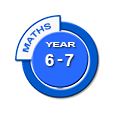
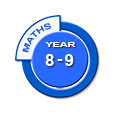
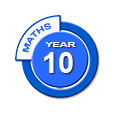
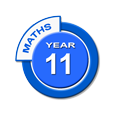
Years 6 - 7
100 modules covering the learning outcomes for Stages 3 and 4 of the Australian Curriculum =
170 pages of information, pictures and diagrams = 2000+ questions and explanations.
-
Topic Contents
- Algebra: 10 modules.
- Geometry: 20 modules.
- Measurement: 22 modules.
- Number: 38 modules.
- Statistics and Probability: 10 modules.
Years 8 - 9
187 modules: learning outcomes for Stages 4 and 5 of the Australian Curriculum = 170+ pages of
information, pictures and diagrams = 3400+ questions and explanations.
In Revision folders 100+ modules covering the learning outcomes for Stages 3 and 4 of the Australian Curriculum = 170 pages of information, pictures and diagrams = 2000+ questions and explanations.
In Revision folders 100+ modules covering the learning outcomes for Stages 3 and 4 of the Australian Curriculum = 170 pages of information, pictures and diagrams = 2000+ questions and explanations.
-
Definitions
- 5 modules testing the meanings of key terms in Years 8 - 9 Mathematics
-
Topic Contents - (Stages 4 and 5)
- Algebra: 47 modules.
- Geometry: 34 modules.
- Measurement: 52 modules.
- Number: 42 modules.
- Statistics: 28 modules.
Year 10
115 modules covering the learning outcomes for Stage 5 of the Australian Curriculum plus 187
Year 8 - 9 modules in Revision folders = 300+ pages of information, pictures and diagrams =
5000+ questions and explanations pitched at Level 6 of the curriculum.
-
Definitions
- 9 modules testing meanings of key terms in Years 8 - 9 Mathematics.
-
Extension
- 21 modules provide extension work in algebra, measurement and statistics as preparation for Year 11.
Achievement Objectives Contents
-
Apply numeric reasoning in solving problems
16 modules that equip students to classify and solve number problems. -
Apply algebraic procedures in solving problems
16 modules that enable students to practise the algebraic methods of substitution, forming and solving equations. -
Investigate relationships between tables, equations and graphs
30 modules that enable students to generate patterns and graph functions etc. -
Apply linear algebra in solving problems
30 modules that enable students to generate patterns and graph functions etc. -
Apply measurement in solving problems
6 modules that enable students to apply measurement in solving problems. -
Apply geometric reasoning and right-angled triangles in solving problems
12 modules that enable students to apply geometrical facts to discover length and angle size details from geometric designs, giving logical proof. -
Apply knowledge of geometric representations and transformation geometry in solving problems
10 modules that enable students to combine transformations, interpret 2-D representations of 3-D objects, and explain negative scale factors. -
Investigate a given multivariate data set using the statistical enquiry cycle
6 modules that help students to identify, record bi-variate data and make statements about variable relationships. -
Demonstrate understanding of chance and data
10 modules that help students to demonstrate understanding of chance and data.
Year 11
215 modules plus 70 Year 10 revision modules = approximately 300 pages of information, pictures and diagrams = 5000 questions and explanations.
-
Definitions
- 11 modules testing meanings of key terms in Year 10 and Year 11 Mathematics.
-
Revision
- 70 modules meeting the learning outcomes for Stages 5 and 6 in algebra, geometry, measurement, number, and statistics.
Achievement Objectives Contents
-
Apply co-ordinate geometry methods in solving problems
24 modules that enable students to formulate coordinate geometry with straight line applications. -
Apply graphical methods in solving problems/Apply systems of equations in solving problems
20 modules deal with creating or reading various standard curved graphs and transformations of them. -
Apply sequences and series in solving problems
24 modules that advance skills with sequences and series and their applications. -
Apply trigonometric relationships in solving problems
24 modules that introduce trigonometric equations, their graphs and solutions; and revise essential right-angled triangle applications, and the use of the Sine Rule and Cosine Formulae. -
Apply algebraic methods in solving problems/Apply systems of equations in solving problems
44 modules that advance students' algebraic skill. -
Apply calculus methods in solving problems
40 modules introduce differential calculus for polynomial and other simple power term expressions, with applications. -
Design a questionnaire, make an inference, conduct an experiment, evaluate a statistically based report
20 modules enable students to carry out appropriate statistical surveying, analysis and presentation techniques with their own project. -
Apply probability methods in solving problems/Investigate a situation involving elements of chance using a simulation
12 modules that advance students' skills with experimental and theoretical probability.
Science
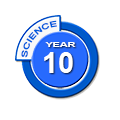
Year 10
Workbooks
This subject is supported by the following write-on workbooks:-
Year 10 Mechanics
70 pages of coloured diagrams, graded questions and answers, covering topics such as: motion, mass and weight, kinetic and gravitational energy, pressure. -
Year 10 Acids and Bases
70 pages of coloured diagrams, graded questions and answers, covering topics such as: atomic structure, ions, equations, acids, bases and indicators, reactions with metals. -
Year 10 Genetics
30 pages of coloured diagrams, graded questions and answers, covering topics such as: cell division, variation and production, chromosomes, monohybrid crosses.
eLearning
152 modules = approximately 250 pages of information, pictures and diagrams = 2500+ questions and explanations.-
Definitions
- 19 modules testing meanings of key terms used in Year 10 Science.
-
Topic Contents
- Acids and Alkalis.
- Classification of Rocks.
- Electricity.
- Energy.
- Genetics.
- Metals.
- Micro-organisms.
- Motion and Force.
- Spatial Relationships within the Solar System.
- Simple Atomic Structure.
- Space Exploration.
Achievement Objectives Contents
Living World (Biology):
-
Demonstrate understanding of biological ideas relating to micro-organisms
12 modules covering bacteria, micro-organisms, fungi and viruses. -
Demonstrate understanding of biological ideas relating to genetic variation
8 modules covering cell division, chromosomes, genes, alleles DNA, and monohybrid crosses.
Material World (Chemistry):
-
Demonstrate understanding of aspects of carbon chemistry
8 modules covering covalent molecules of carbon; alkanes, alkenes and alcohols; properties of carbon compounds; production and uses of carbon compounds. -
Demonstrate understanding of aspects of selected elements
20 modules covering atomic structure, writing equations, physical properties of metals and their reactions, and non-metals. -
Demonstrate understanding of aspects of chemical reactions
20 modules covering atomic structure, ions, writing equations, combination reactions, decomposition reactions. -
Demonstrate an understanding of aspects of acids and bases
23 modules covering atomic structure, ions, rates of reaction, writing equations, acids, bases and indicators, reactions of acid and metals. -
Investigate the implications of the properties of metals to their use in society
9 modules covering the physical properties, uses and reactions of metals.
Physical World (Physics):
-
Demonstrate understanding of aspects of electricity and magnetism and Investigate the implication of electricity and magnetism in everyday life
12 modules covering static electricity, voltage and current, circuits and their components, magnetism. -
Demonstrate understanding of aspects of mechanics
18 modules covering motion, mass, balanced and unbalanced forces, energy and pressure. -
Investigate the implication of heat in everyday life
4 modules covering heat capacity, latent heat and temperature.
Planet Earth and Beyond (Geology and Astronomy):
-
Demonstrate understanding of the formation of surface features
9 modules provide students with opportunities to describe, explain and discuss the types and formation of igneous, metamorphic and sedimentary rocks. -
Demonstrate understanding of the effect on planet Earth of astronomical cycles
4 modules examine the orbits of the planets and their moons and the scale of the solar system.
Also:
-
Practical Investigation Principles for Physics, Chemistry and Biology
4 modules that revise and apply the principles of investigations in biology, chemistry, and physics.
Physics
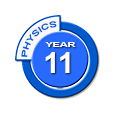
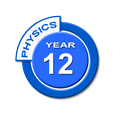
Physics Year 11
Workbooks
This subject is supported by the following write-on workbooks:-
Waves
96 pages of coloured diagrams, graded questions and answers. -
Mechanics
92 pages of coloured diagrams, graded questions and answers. -
Nuclear Physics
27 pages of coloured diagrams, graded questions and answers. -
Electricity and Electromagnetism
93 pages of coloured diagrams, graded questions and answers.
eLearning
88 modules = approximately 300 pages of information, pictures and diagrams = 1760 questions and explanations.-
Revision (Year 10 work)
-
Topic Contents
- Analyse Data Graphically.
- Atoms and Radioactivity.
- Electricity: Static and DC.
- Electromagnetism.
- Force.
- Light.
- Measurement.
- Momentum and Energy.
- Motion.
- Waves.
Achievement Objectives Contents
-
Take measurements of physical quantities and analyse data graphically to determine a relationship
10 modules cover Analysing Graphs, Drawing Line Graphs, Measurement and Calculation, Measurement and Metrics, Vectors and Scalars. -
Demonstrate understanding of waves
20 modules cover electromagnetic waves, reflection and refraction of light and mirrors, superposition of pulses. -
Demonstrate understanding of mechanics
24 modules cover topics such as Newton's First and Second Laws, acceleration, motion, power, work and energy etc. -
Demonstrate understanding of atomic and nuclear physics
4 modules cover the atom and radioactive decay. -
Demonstrate understanding of electricity and electromagnetism
20 modules cover topics such as electrical and magnetic field devices, circuits, electromagnetic induction etc.
Physics Year 12
Workbooks
This subject is supported by the following write-on workbooks:-
Wave Systems
96 pages of coloured diagrams, graded questions and answers. -
Mechanical Systems
102 pages of coloured diagrams, graded questions and answers. -
Modern Physics
66 pages of coloured diagrams, graded questions and answers. -
Electrical Systems
136 pages of coloured diagrams, graded questions and answers.
27 pages of coloured diagrams, graded questions and answers.
eLearning
88 modules = approximately 300 pages of information, pictures and diagrams = 1760 questions and explanations.-
Revision (Year 11 work)
-
Topic Contents
- AC Circuits.
- Atoms, Photons & Nuclei.
- Circular & Rotational Motion.
- DC Circuits and Capacitance.
- Electromagnetic Induction.
- Practical Investigations and Mathematical Relationships.
- Simple Harmonic Motion.
- Translational Motion.
- Waves, Interference & Diffraction.
Achievement Objectives Contents
-
Carry out a practical investigation with guidance, that leads to a mathematical relationship
6 modules covering experimental error, graphical experimental error and empirical mathematical relationships. -
Demonstrate understanding of wave systems
12 modules covering waves and standing waves, the Doppler Effect. -
Demonstrate understanding of mechanical systems
28 modules covering translation motion, circular and rotational motion and simple harmonic motion. -
Demonstrate understanding of atoms, photons & nuclei
14 modules covering atomic line spectra, Bohr's model of the hydrogen atom, mass energy conservation, quantum theory etc. -
Demonstrate understanding of electrical systems
30 modules covering DC circuits and capacitance, electromagnetic induction and AC circuits etc.